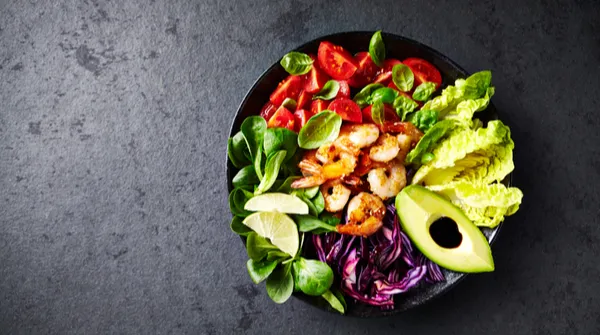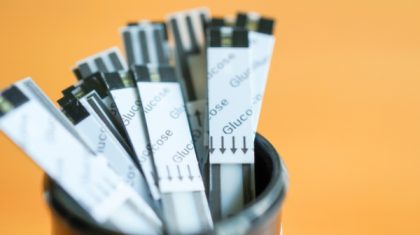Although diet and lifestyle changes have been found to be effective in reversing diabetes, albeit to an extent, it does not guarantee favourable results every time. It is important to note that subscribing to pricey diet programs or “special” diabetes remission diet charts will not work without sharing your complete health profile with the concerned medical guide/nutritionist. You need to understand that each individual reflects distinct biological metrics when it comes to diabetes, and knowing these medical parameters is paramount to developing relevant diet programs and thereby achieving the “reversal diabetes” goal.
Introduction to Diet and Diabetes Reversal
Meta-analyses and several scientific studies of repute have confirmed a link between what we eat ( diet pointers ) and type 2 diabetes. These immensely complex studies have discovered that certain foods and their quality, consumption of alcohol, beverages, and the right amount of micronutrients reverse type-2 diabetes. However, these tests also mention that the results are inconsistent or not precise, and therefore warrant further experiments to prove its integrity in reversing and preventing “insulin resistance”.

Low-Carb Diets for Diabetes Reversal – Benefits and Considerations
Here is an eye-opener. In a recent study, it was found that a low-carb diet not only helps reverse type-2 diabetes but also helps in maintaining a healthy blood sugar level. What is more astonishing about a low-carb diet is its positive effect on younger diabetic individuals and those diagnosed in their early stages. The study showed that more than 75% ( young ) people managed to reverse diabetes. The overall percentage, too, was impressive. Almost 50% of folks in this study reversed type-2 diabetes successfully. Of course, a part of this experiment also included the use of a diabetes machine.
Mediterranean Diet and Diabetes Reversal – A Heart-Healthy Approach
The Mediterranean diet gets its name from geographies located in and around the Mediterranean region. The countries along this belt not only have a distinct way of cooking, but their choice of raw constituents is extremely healthy. This includes vegetables, fats which are good for the body and assorted grains. Mediterranean food is also devoid of meat, high carbs and mostly sugar-free. This high-fibre, low-carbohydrate and protein-rich food make the Mediterranean diet a great option for reversing type-2 diabetes. In fact, those who participated in this low-glycemic index diet improved their blood sugar factor to a great extent.
Plant-Based Diets for Reversing Diabetes – Emphasizing Whole Foods
Whole foods are loaded with important nutrients. This includes fiber, good fats etc. Processed foods, on the other hand, are devoid of these essential nutrients. Moreover, added preservatives and ingredients such as harmful salts and bad fatty substances make processed food even more harmful, especially for folks diagnosed with diabetes.
At the same time, plant-based diets such as those that contain Spirulina, oregano, rosemary or extracts of these foods improve triglyceride and glycemic levels. Some forms of algae have proved to be beneficial in reversing diabetes and also reverse prediabetes. Chlorella vulgaris, a dietary supplement and a food ingredient, is commonly used in plant-based diets as a protein-rich additive. It has been found that its extract prevents insulin resistance. A few exotic plants and their extracts have a positive effect on the human pancreas too.

Role of Fiber in Diabetes Reversal – Importance and Food Sources
It may surprise many readers that our body cannot and does not break up the fibre. This food is simply eased from the system after extracting the essential nutrients and therefore does not impact blood sugar levels. Interestingly fibers are categorised as soluble and insoluble.
Soluble fibers such as fruits, beans, peas and legumes are easy on the stomach and our digestive system. Soluble fibers do not upset the blood sugar level and also helps maintain optimal cholesterol level as they dissolve easily and exit the body without affecting the critical biological parameters. On the other hand, insoluble fibers such as certain fruits, bran, seeds, nuts and whole wheat are good friends of the human body, especially when it comes to managing a healthy insulin level. Insoluble fiber builds up a strong gut through healthy bowel movements. It is highly recommended to have a glucose test kit handy in case this form of eating plan is undertaken.
Glycemic Index and Diabetes – Understanding the Impact of Carbohydrates
Did you know that the sugar carried by the blood vessels is the source of energy for all physical activities? What actually happens is whenever an action (internal or external) is triggered, our body burns this sugar for energy. By reducing carbohydrate intake, our body’s main source of sugar (fuel) begins to process other constituents, such as fats and protein, to get the required energy. This not only results in weight loss (a positive factor for the reduction of blood sugar factor) but also maintains and manages optimal sugar levels.
Ketogenic Diet and Diabetes Reversal – What You Need to Know
“Ketogenic diet” has become a synonym for low-carb diet, literally. It is one of the most effective ways to reverse prediabetes and diabetes. So, how is this target achieved? The answer is via food choices. The ketogenic diet consists more of fibers, proteins and good fats than carbohydrates. The result: reduction in sugar level. This happens because the body starts to exploit proteins and fats when it runs out of sugar to provide the necessary energy. This process is called Ketosis and is mostly followed as a risk-free way of losing weight. That it lowers sugar levels is just a collateral benefit.
Read More: All You Need To Know About Vegan Diet For Diabetics
Conclusion
Studies have shown that in spite of genetic influence, type-2 diabetes, most of the time, develops because of a sedentary lifestyle, bad food and sleeping habits, stress and consumption of alcohol and smoking. Type-2 diabetes can be managed through medication; insulin injection becomes imperative in severe cases. However, diet plays an important role too. In many cases, patients have either managed to keep their sugar level in check while a few have even reversed it.
————————————
Disclaimer :
It is crucial to monitor your blood sugar levels using a smartphone-connected glucometer on a regular basis. If you feel doubtful about whether or not you should consume a particular item, you should do a quick sugar check before and after you consume it.
Being a person with diabetes, you can enjoy your favourite treats by making sure that you keep the portion size in check. Overindulging can lead to a spike in your sugar levels. It’s important to discuss with your physician how a food item can affect your blood glucose levels. If you have any doubts about what you can include as a part of your diabetes diet, you should always speak to your doctor or health coach.
Consult BeatO’s health coach for free and control your diabetes. Download the BeatO app!
Check your blood sugar level with Beato Glucometer today.
Get the best health advice with BeatO!





